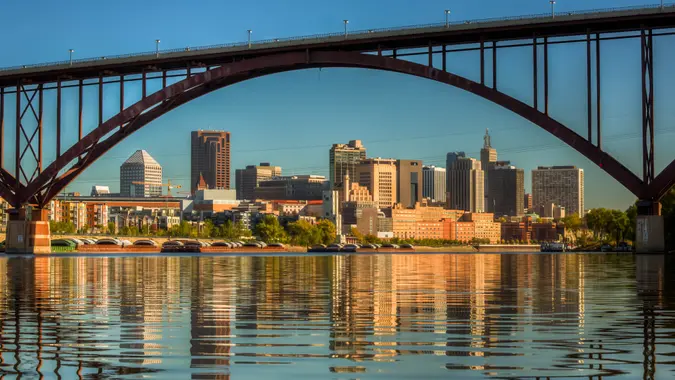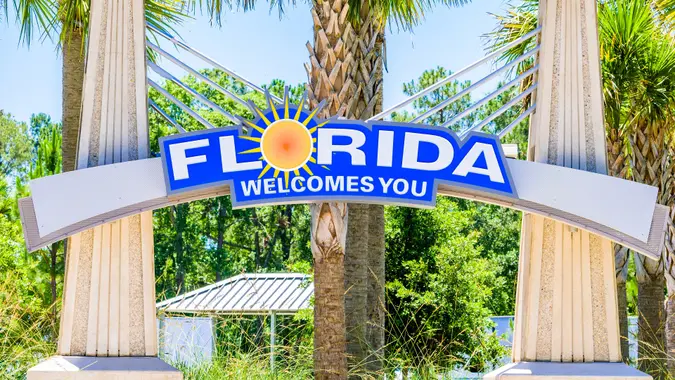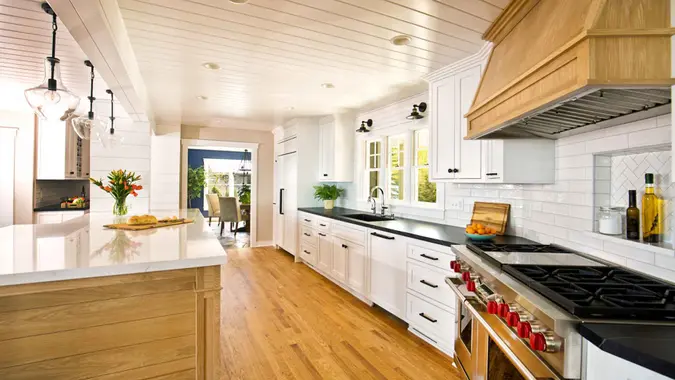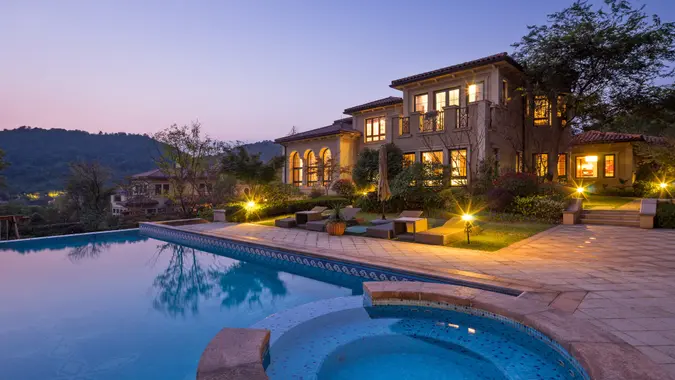I’m a Real Estate Agent: Here’s Why You Should Buy a House in One of These 5 ‘Boring’ Cities Before Everyone Else

Commitment to Our Readers
GOBankingRates' editorial team is committed to bringing you unbiased reviews and information. We use data-driven methodologies to evaluate financial products and services - our reviews and ratings are not influenced by advertisers. You can read more about our editorial guidelines and our products and services review methodology.

20 Years
Helping You Live Richer

Reviewed
by Experts

Trusted by
Millions of Readers
One home buyer‘s “boring” is another buyer’s safe, stable, and wholesome, with strong public schools and a solid job market.
Don’t be surprised if these affordable “flyover” cities outperform coastal enclaves in the coming years.
Indianapolis, Indiana
- Average home price: $229,422 (Zillow)
Make no mistake: Indianapolis is a major city, complete with major league sports teams, museums and abundant dining and entertainment. Yet the average home costs 37% less than the national average of $363,932.
“The affordable living, paired with strong job and wage growth, makes Indy a promising market for growth over the next few years,” explains Natalie Clayton, real estate broker with the Maywright Property Co.
Des Moines, Iowa
- Average home price: $208,187
Over the last five years, Des Moines’ population has surged roughly 2.5 times faster than the country as a whole, according to Census Bureau data reported by the Federal Reserve.
Real estate agent and data analyst Ivo Draginov of BatchData notes that investors have taken notice.
“Lower-priced markets seeing above-average population growth are the cities to watch over the next few years. Investors are searching out better rent-to-price ratios, housing stock that families can afford as well as owner-friendly states,” according to Draginov.
Louisville, Kentucky
- Average home price: $251,931
With homes selling 31% below the national average, Louisville offers a bargain. And Americans have noticed, with Louisville seeing a 10.1% surge in population over the last five years, compared to the national growth of 2.9%.
“Louisville remains insulated from the severe market swings that you find in other major metropolitan cities,” observes real estate broker Aaron Luttrull of Schuler Bauer ERA Powered. The city has seen its home prices grow 3.9% over the past year, despite flat national growth of 0.1% per Zillow.
Columbus, Ohio
- Average home price: $244,665
With a metro area population over 2.2 million, Columbus has plenty of substance and amenities behind it to draw transplants. Which it has certainly done, achieving population growth around 50% faster than the national average.
Real estate expert Adam Hamilton of REI Hub points to the growing popularity of Ohio cities.
“More people are realizing that Ohio is a great place to move to,” Hamilton said. “The job market in Columbus is solid and continuing to grow, and the housing market is affordable and stable.”
Knoxville, Tennessee
- Average home price: $365,764
While Knoxville homes cost about the national average, Knoxville has seen its population boom by 10.2% over the past five years.
Fred Loguidice invests across the Southeast through his company Sell My House Fast North Carolina, and loves the Knoxville market.
“Knoxville has a solid economic base, anchored by the University of Tennessee. Residents enjoy a slower pace of life, affordable cost of living, and no state income tax,” Loguidice stated.
All of these cities should continue seeing strong population growth, fueling price hikes in the years to come. Consider getting in now before prices start clawing their way towards coastal levels.
More From GOBankingRates
 Written by
Written by  Edited by
Edited by 

























